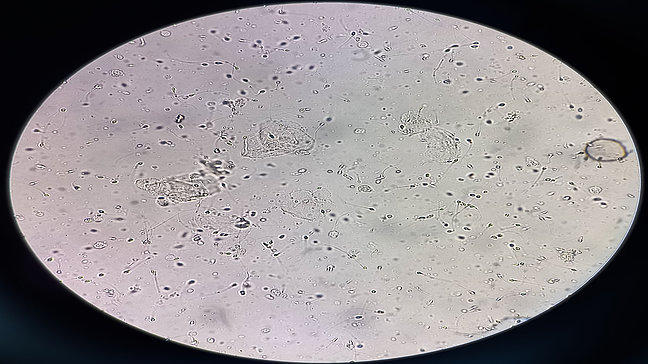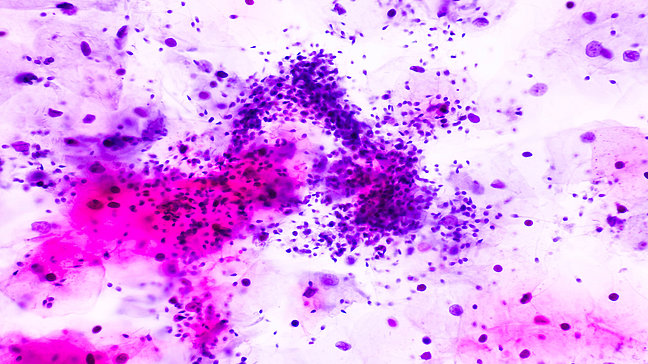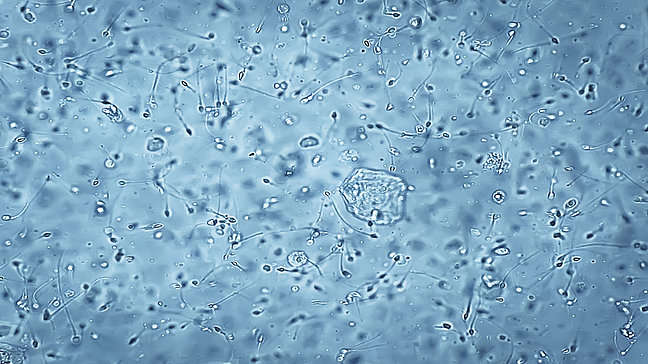
Testicular microlithiasis
Causes of testicular microlithiasis
The causes of microlithiasis are not yet fully understood. However, it can be associated with various factors, including:
- **Genetic predisposition**: A family history of testicular anomalies or [testicular cancer](t3://record?identifier=tx_news&uid=39) can increase the risk.
- **Testicular anomalies**: Patients with undescended testicles (cryptorchidism) or another structural malformation of the testicles have a higher risk of developing microlithiasis.
- **Infections or inflammations**: In some cases, microlithiasis may result from chronic [inflammations](t3://record?identifier=tx_news&uid=37) or infections of the testicles.
Symptoms of testicular microlithiasis
- In most cases, no symptoms
- Microlithiasis is usually discovered incidentally during ultrasound examinations of the testis
- In very rare cases, microlithiasis may be associated with mild discomfort or unease in the scrotum
Diagnosis of Testicular Microlithiasis
The diagnosis is usually made by an ultrasound of the testicles, where the calcium deposits appear as tiny, echogenic spots. Microlithiasis is often discovered incidentally when an ultrasound is performed for other reasons, such as investigating testicular complaints or as a preventive examination. If an underlying condition, such as testicular cancer, is suspected, further tests may be necessary to confirm the diagnosis.
Treatment options for testicular microlithiasis
- Observation: Since microlithiasis in most cases causes no symptoms and is harmless, no specific treatment is usually required. However, regular ultrasound examinations may be recommended to detect changes in the testicle at an early stage.
- Monitoring in at-risk patients: In patients with additional risk factors for testicular cancer, such as cryptorchidism or a family history of testicular cancer, close monitoring is recommended to detect possible signs of testicular cancer early.
Preventive measures for testicular microlithiasis
Since the exact causes of microlithiasis are not fully known, there are no specific preventive measures. However, it is recommended to perform regular self-examinations of the testicles and consult a doctor if there are any abnormalities or complaints. Patients with an increased risk of testicular cancer should be closely monitored.
Common Patient Questions About Testicular Microlithiasis
Testicular microlithiasis is relatively rare and is usually discovered incidentally during ultrasound examinations. The exact cause is not yet fully understood, but genetic factors and disturbances in the normal development of testicular tissue may play a role.
Yes, regular check-ups are recommended, especially if there are additional risk factors for testicular cancer. These check-ups help to detect changes early and better assess the risk.
Testicular microlithiasis itself is not a direct risk factor for testicular cancer, but it can occur more frequently in men with other risk factors. Therefore, doctors often recommend regular ultrasound examinations for testicular microlithiasis to detect potential developments at an early stage.
So far, there is no clear evidence that lifestyle factors such as diet or physical activity directly influence the risk of testicular microlithiasis. Nevertheless, a healthy lifestyle can contribute to the overall health of the urogenital area.
![[Translate to English:]](/fileadmin/_processed_/1/d/csm_UZ-Logo-2024-breit-aK-1500px-white-red_4b49b8d28c.png)


